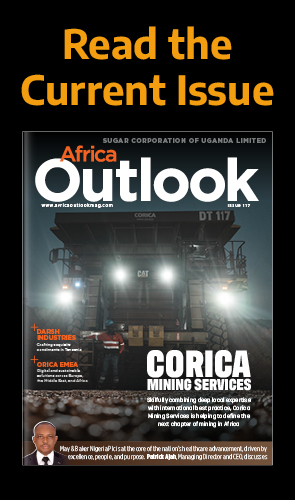For centuries, even millennia, the sea has been the source of both conflict and prosperity among civilisations.
From the First Anglo-Dutch War of the 1650s that was driven by a desire to consolidate lucrative ocean-based spice trade routes in Asia to the Opium Wars of the Mid-1800s, instigated by the British in an attempt to maintain access to China, countless clashes have been fought at sea throughout history.
Even today, in what is largely a more peaceful global society, the roots of globalisation are still firmly planted in the maritime industry.
It is of little surprise therefore that, with few exceptions, the world’s 45 landlocked countries are poor. Of the 15-lowest ranking countries in the human development index, eight of these have no coastline at all, while the GDP per capita of landlocked countries is roughly 40 percent lower than that of their maritime neighbours.
The challenges are numerous. From dependence on the transit networks of other countries to increased costs and waiting times surrounding the import of oil, food and other goods, barriers to trade have a great domino effect on growth and development.
For 16 of Africa’s 55 countries, this rings particularly true. Yet despite the problems, resolutions are beginning to come to the fore.
In March 2018, the continent cast its vote for more and better internal trade through the signing of the African Continental Free Trade Area Agreement (AfCFTA), committing to remove tariffs on 90 percent of goods, as well as liberalising trade services and addressing non-tariff barriers. This has subsequently made Africa the largest free trade area in the world, serving more than one billion consumers with a GDP of $3 trillion.
Coupling this, a number of new cross-border transit corridors are under construction or expansion – intra-continental transport routes that will prove to be crucial in both capitalising on the benefits provided by the AfCFTA and facilitating improved internalisation of the continent’s landlocked countries.
“By removing physical barriers to cross-border trade and expanding markets beyond national boundaries, international road corridors foster a conducive environment for the private sector and for attracting foreign direct investments,” Amadou Oumarou, Director of the Infrastructure & Urban Development Department of the African Development Bank (AfDB) stated in the organisation’s recently published Cross-Border Road Corridors: The Quest to Integrate Africa report.
“In addition to enhancing trade and strengthening regional integration, cross-border road corridors contribute to poverty reduction by increasing access to markets and social services.”
Indeed, the AfDB itself, mandated to spur sustainable economic development and social progress across the continent, has contributed significantly to the development of these networks.
Over the past 12 years, the Bank has financed nearly $8 billion of regional transport projects, helping to create 13,000 kilometres of regional highways on 17 road corridors along 26 one-stop border post facilities. And, as is demonstrated by numerous case studies, these corridors are beginning to fulfil their purpose.
Take the Bamako-Dakar highway, for example. Costing $400 million back in 2008, the route now carries more than half of Mali’s import and export goods to and from the Port of Dakar, enabling the country to diversify its trade routes. Further, the AfDB estimates that the country has been able to reduce costs by more than 20 percent and increase international trade by 10 percent as a result.
“In Southern Africa, the Nacala Corridor connects Zambia and Malawi to the Mozambican Port of Nacala,” Oumarou stated in the report, eluding to a second crucial case study.
“Despite being the shortest route to a seaport, it was under-used because of many missing links which made the journey long and difficult. Most international shippers preferred to make the journey to the Port of Durban in South Africa, much further away than Nacala.
“The Bank injected $420 million to finance approximately half of the total 1,900-kilometre corridor between Lusaka and Nacala, facilitating regional trade among the three countries. Official port statistics show an average annual growth rate of 6.2 percent at Nacala port between 2012 and 2016.”
A third example comes from East Africa’s Mombasa-Nairobi-Addis Ababa corridor – a route that has received more than $1 billion in funding from the AfDB. Serving a similarly important purpose, it has enabled Ethiopia to trade roughly 20 percent of its freight more competitively through the Port of Mombasa, and bilateral trade between Ethiopia and Kenya has increased 400 percent.
Yet these three corridors form what is just a small sample of the continent’s expanding transport networks.
They constitute part of the Trans-Africa Highway network that comprises numerous other transcontinental road projects, backed by the African Union and United Nations Economic Commission for Africa (UNECA), spanning more than 56,000 kilometres in total.
Combine them with similarly critical ongoing rail projects, from the Isaka-Kigali Standard Gauge Railway spanning Tanzania and Rwanda to the existing Assia Ababa-Djibouti Railway, and Africa’s trade-facilitated development situation looks set to improve in the coming years.
Contributions of the AfDB
East and Southern Africa
· Total investment: $4 billion
· Kilometres of road financed: 4,781
· People in project areas: 94 million
· One-stop border posts built: 9
Central Africa
· Total investment: $1.6 billion
· Kilometres of road financed: 2,216
· People in project areas: 35 million
· One-stop border posts built: 5
West and North Africa
· Total investment: $2.6 billion
· Kilometres of road financed: 5,682
· People in project areas: 110 million
· One-stop border posts built: 12






























